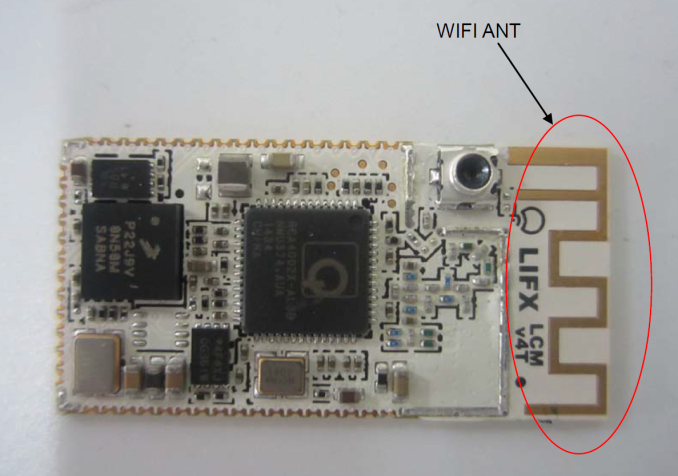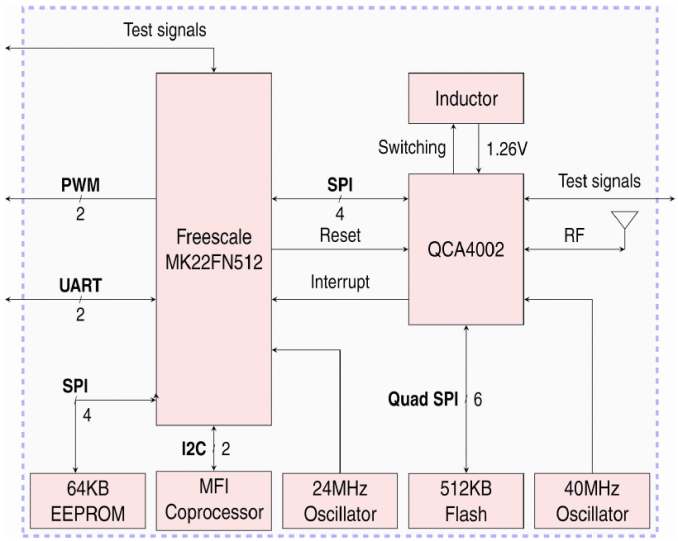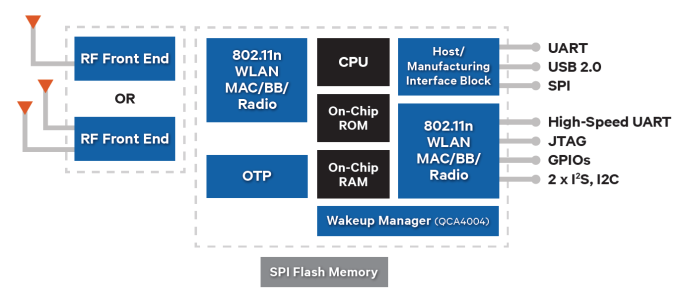LIFX White 800 Smart Bulb Review
by Ganesh T S on June 12, 2015 9:55 AM EST- Posted in
- Home Automation
- Wi-Fi
- Qualcomm Atheros
- LIFX

Introduction and Component Analysis
The Internet of Things (IoT) revolution has sparked an increased interest in home automation. Lighting is one of the major home automation aspects. LIFX is one of the popular crowdfunded companies in this space to have come out with a successful product. The success of their multi-colored LED bulbs brought venture capital funding, allowing them to introduce a new product in their lineup - the White 800. The launch of the White 800 also coincided with firmware v2.00 for the LIFX bulbs.
The initial products from LIFX were multi-color LED bulbs similar to the Philips Hue. The new LIFX White 800 is a white LED bulb with tunable color temperature. Color temperature is an important aspect in the lighting environment. In addition to visual comfort, it also affects human behavioral aspects. Different color temperatures are desirable for different human activities. Therefore, tunable color temperature in a single light bulb is a good thing to have. The specifications of the White 800 indicate 890 lumens of brightness (60W-equivalent), 25000 hours lifetime (22.8 years @ 3 hrs/day), 11 W power consumption and tunable color temperature from 2700K to 6500K.
The first generation LIFX bulbs relied on Broadcom's WICED platform. It also had a TI chip for 802.15.4 mesh networking. However, the White 800 gets rid of the mesh networking aspect and uses the QCA 4002 low-power Wi-Fi platform. This enables a lower price point for the White 800 compared to the other bulbs in the LIFX lineup.
At the heart of the unit is the lighting control module (LCM). LIFX also seems to be targeting this board towards OEMs in addition to using it within the White 800.
LIFX Lighting Control Module (FCC filing)
THe LCM documentation gives more insight into the internal components of the board.
The unit uses a Freescale Kinetis micrcontroller (ARM Cortex-M4-based) coupled with the Qualcomm Atheros QCA 4002. The QCA 4002 is very similar to the AR9330 used in the Ubiquiti mFi devices. The integrated CPU is MIPS-based. It is tuned for low power operation and, correspondingly, lower host CPU performance. The AR933x can run full Linux, but the QCA 400x is targeted towards embedded platforms. In the LIFX, the configuration (QCA 4002) is a 1x1 802.11n 2.4 GHz connectivity platform with the RF switches integrated.
The use of the QCA 4002 software stack on the Kinetis microcontroller allows for AllSeen / AllJoyn certification (the IoT standard backed by Qualcomm). The LIFX White 800 also carries the 'works with nest' logo, thanks to the cloud back-end.
We have looked at the internal hardware in the LIFX White 800. In the next section, we look at what the average consumer sees - the setup and usage process.













55 Comments
View All Comments
ganeshts - Friday, June 12, 2015 - link
I think that should be easily achievable using the documentation that has already been provided by LIFX for the protocol. Maybe LIFX should add that option in their app itself. Will provide them feedback on it.nathanddrews - Friday, June 12, 2015 - link
Please also provide feedback that some users (such as myself) will not purchase cloud-only devices. I can already control all the lighting, media devices, and other devices in my home without the cloud, so there's no reason to buy this if it adds another hurdle or need for another app. That's really too bad.ganeshts - Friday, June 12, 2015 - link
Trust me, that is one of the first things I tell to anyone pitching home automation devices for coverage.That is also one of the main reasons we gave the Ubiquiti Networks mFi the 'Recommended' tag last time around.
Nogami - Monday, June 15, 2015 - link
Although it's not the same product, I do exactly this at home with my Philips Hue setup. We've re-done our entire condo with "smart LED bulbs", and besides saving power, having the ability to adjust colour and brightness automatically via a schedule is amazing. Easily the best "whole home" purchase we made last year.For example, at 11:30 at night, all lights except the bedroom gradually darken to "off" over about 10 minutes (leaving ample time to pause if we're staying up late), while the bedroom lights fade to about 50% intensity over 10 minutes and change to a very warm orange/red colour temperature.
At midnight, all bedroom lights except for a night-light dim down to "off" over 5 minutes, then the night-light goes down after that.
In the morning, light start out as a deep red/orange colour and gradually brighten over 20 minutes as we get up, and the colour temperature shifts to a more white colour as the cycle completes.
Then everything automatically shuts off as we're out the door to work. We also have some evening schedule settings to periodically dim lights off after 2-3 minutes every 60 minutes (the ones we tend to forget to turn off as we're around the house in the evenings), to save power.
modulusshift - Friday, June 12, 2015 - link
What's the CRI of these bulbs? I find that helps more than temperature alone for dark winter areas.ganeshts - Friday, June 12, 2015 - link
LIFX claims all their bulbs have CRI > 80. Unfortunately, I didn't test that out myself.SeannyB - Friday, June 12, 2015 - link
It'd be nice to see some more exact readings on color temperature (is there a green or magenta tint?), CRI and a color spectrum graph, but I suppose that would require an investment in a color spectrometer.On a general note... I love the idea of LED bulbs that can vary their color temperature throughout the day, but the price is way outside of the ballpark of regular old 2700K name-brand LED bulbs. Years after the Philips Hue, they're still in the early-adopter price range.
boozed - Friday, June 12, 2015 - link
A quick and dirty test that can be performed without any specialised equipment (Anandtech can't afford a spectrometer?) would be to take a photo of a neutral grey target illuminated only by the light bulb with a digital camera on which the white balance has been set to daylight. Obviously it doesn't give you a spectrum, but it will give you a reasonable idea of the comparative difference in colour temperature and cast between illuminators.And a simple DIY spectrometer consists of nothing more than a glass prism, a box with a narrow slit, a dark room and a camera.
Daniel Egger - Saturday, June 13, 2015 - link
Or better use a color correction card and shoot that under the lighting then use the software to create a color correction profile and put the results here. Something like the X-rite Color Checker Passport should work just fine for that.RBFL - Friday, June 12, 2015 - link
How do you observe audible humming? It would have to be quite severe!